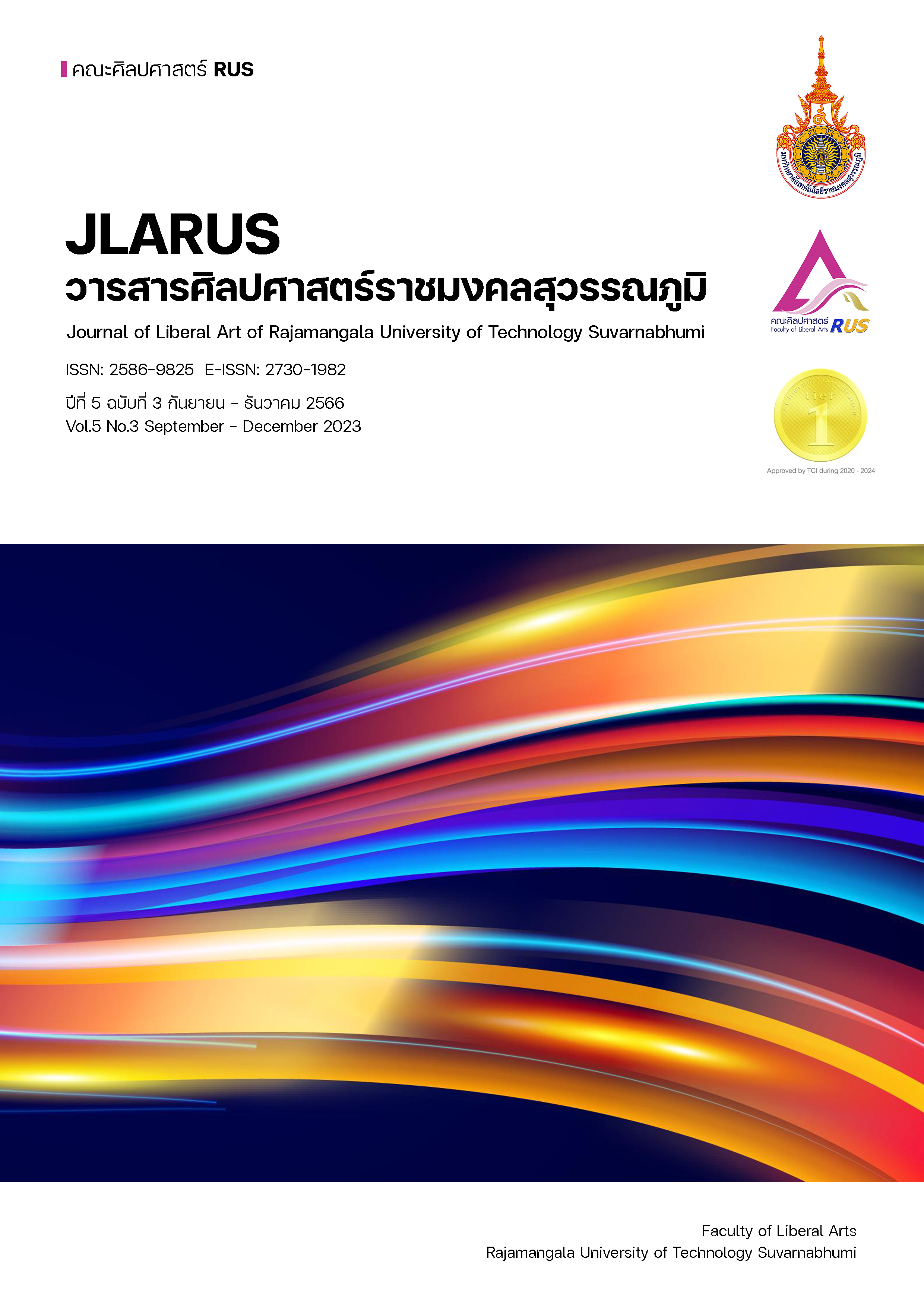DEVELOPMENT OF DRAWING TRAINING APPLICATION WITH A DUAL PROCESS FOR ENHANCING CREATIVE THINKING OF PRIMARY SCHOOL STUDENTS: ELECTROENCEPHALOGRAM STUDY
Main Article Content
Abstract
This article aimed to (1) study the development of drawing training application with a dual process for enhancing creative thinking of primary school students, (2) to compare the accuracy scores of creativity thinking test on computerized version in pictures of things, pictures of animals and pictures of people in the experimental group after training versus the control group, and (3) to compare the mean relative power of EEG. The alpha frequency range in the experimental group after training, the sample was sixty participants aged between 10 – 12 years old participated. They were selected by simple random assignment employed to place them in experimental and control groups of equal size. This research was an experimental research. The instrument for collecting data was drawing training application with a dual process and creativity thinking test on computerized version was assessed by response accuracy scores. Analysis data by Descriptive statistics, One-way ANOVA, MANOVA and Content Validity Index Analysis. The research results were:
1) An application to practice drawing lines with a parallel process as a line drawing practice both cartoon and realistic images sorted of easy to difficult level.
2) The accuracy scores in the experimental group after training were higher than the control group.
3) After training, the mean relative power of EEG with the alpha frequency range in the experimental group expressed right hemisphere alpha wave was stronger and more pervasive than left hemisphere that was statistically significant and involved in art creativity.
These showed that the drawing practice application developed with a tandem process was usable for primary school students to increase the creative thinking appropriately.
Article Details

This work is licensed under a Creative Commons Attribution-NonCommercial-NoDerivatives 4.0 International License.
References
Chrysikou, E. G., Jacial, C., Yaden, D. B., van Dam, W., Kaufman, S. B., Conklin, C. J., & Newberg, A. B. (2020). Differences in brain activity patterns during creative idea generation between eminent and non-eminent thinkers. Neurolmage, 220, 117011.
Darda, K. M., Christensen, A. P., & Chatterjee, A. (2023). Does the frame of an artwork matter? Cultural framing and aesthetic judgments for abstract and representational art. Psychology of Aesthetics, Creativity, and the Arts. https://doi.org/10.1037/aca0000569
Jingyuan Ren, Furong Huang, Chuanji Gao, Jarrod Gott, Sarah F Schoch, Shaozheng Qin, Martin Dresler, & Jing Luo. (2023). Functional lateralization of the medial temporal lobe in novel associative processing during creativity evaluation. Cerebral Cortex, 33(4), 1186–1206.
Panesi, S., & Morra, S. (2018). Relationships between the early development of drawing and language: the role of executive functions and working memory. The Open Psychology Journal, 11(1), 15-24.
Welke, D., Purton, I., & Vessel, E. A. (2023). Inspired by art: Higher aesthetic appeal elicits increased felt inspiration in a creative writing task. Psychology of Aesthetics, Creativity, and the Arts, 17(3), 261–277.
Yadav, S., Chakraborty, P., & Mittal, P. (2022). Designing drawing apps for children: Artistic and technological factors. International Journal of Human Computer Interaction, 38(2), 103-117.
Zhou, J., Wang, X. M., Bavato, D., Tasselli, S., & Wu, J. (2019). Understanding the receiving side of creativity: A multidisciplinary review and implications for management research. Journal of Management, 45(6), 2570-2595.
Zhang, X., Cheng, L., Dai, D. Y., Tong, W., & Hu, W. (2020). Adolescents with different profiles of scientific versus artistic creativity: Similarity and difference in cognitive control. Thinking Skills and Creativity, 37, 100688.


